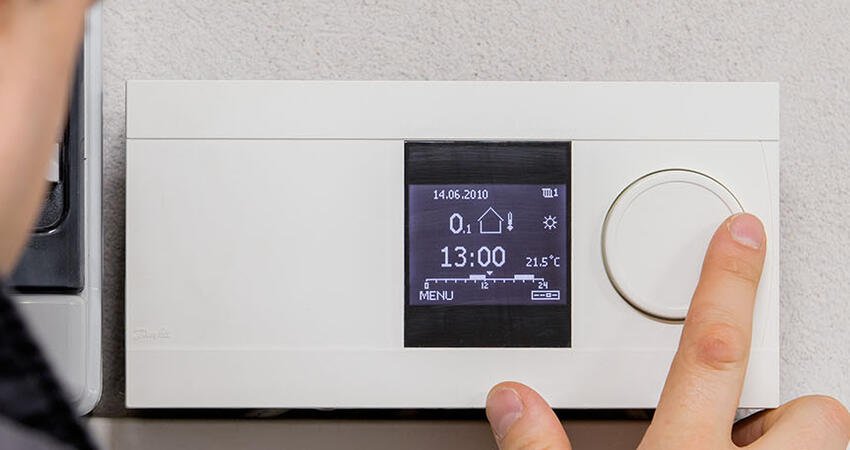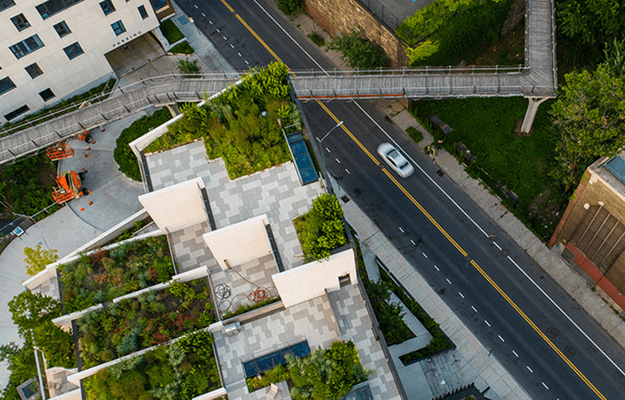
Seeing Green: Prioritizing Tenants’ Needs in Sustainable Affordable Housing
by Kimberly Burrowes and Maya Brennan
The growing use of green building practices in market rate and subsidized housing reflects the appeal of sustainability from economic, ecological, and health perspectives. Households can benefit from savings associated with reducing waste, conserving water and energy, and employing renewable resources, while developers can make properties more competitive. The choice to build green housing can also generate several environmental advantages through both reductions in resource use and the adoption of less toxic materials, which in turn may improve the health and well-being of tenants. However, green features are still sometimes seen as luxury products with a high premium rather than a vehicle for promoted health equity and cost savings.
For low-income residents, the promise of reduced utility costs can go a long way. Minimizing water, electricity, gas, and other utility expenses through greening practices can alleviate budget pressures that may create financial instability. Though luxury developments may charge a premium for cutting-edge environmental design features, research from New Ecology found that in many cases, green building features in affordable housing can cost less than conventional affordable housing.
Housing leaders and policy experts have used incentives, technical supports, and guidance to boost green practices among affordable housing developers. Through the low-income housing tax credit program, state housing finance agencies have encouraged the adoption of water conservation, renewable energy, energy efficiency improvements, benchmarking, green building standards, and other sustainability measures. Stewards of Affordable Housing for the Future (SAHF) has been a leader in both challenging its members to cut energy consumption and providing tools and assistance to make it feasible. Enterprise Community Partners has developed and refined Green Communities criteria that extend beyond materials selection and conservation to aspects of the site and the property’s operations.
Though the incentives and guidance exist for affordable housing developers to go green, some design decisions and features require not just the property owner’s buy-in but the residents’ as well. Hence, affordable housing developers can consider three ways to prioritize tenants’ needs when incorporating green design.
- Tenants can benefit from green elements that require little to no learning curve. The greening of standard building components, such as installing more efficient bulbs, may address tenants’ goals of improved living environments and reduced utility bills without them having to make any lifestyle changes. Early adopters of green components learned that some of the more exciting sustainability features, such as greywater facilities and rooftop wind turbines, were either underutilized or had insufficient results, whereas the simpler design elements—green roofs, nontoxic paint—were effective.
- With green solutions that are more complex, tenant engagement is essential. Green features may not be a large expense, however the full savings are not realized if tenants do not use them. The resident engagement toolkit from SAHF shows how residents can and should be part of a property’s plan for improving sustainability. In its Green Communities criteria, Enterprise encourages having an orientation for residents and property staff about the green features and providing a manual that explains why and how to use each feature. A little investment in literacy about the building systems can translate into long-term savings for residents.
- Green affordable housing can also be healthy affordable housing. Research shows that housing can support health through more traditional routes, such as of affordability, stability, and quality, and through green design. Research in Boston found children with asthma had fewer symptoms, health-related school absences, and hospitalizations when they lived in public housing that incorporated green design elements. These observations were also evident in the mixed-income development Paseo Verde in Philadelphia where the green features supported health for children living in the building. In the Bronx, Intervale Green provides a combination of healthy and sustainable features for its low-income residents, including 39 apartments for families exiting homeless shelters. The building would have health benefits simply as stable shelter, but instead it went beyond with a rooftop farm, conservation-oriented art installations, and energy star appliances.
Affordable housing developers can incorporate low-cost green features in ways that value and support residents, while generating economic benefits for both the property and its residents. Tenants have to be engaged, heard, and supported to successfully generate the potential cost savings and maximize environmental advantages for the community.


